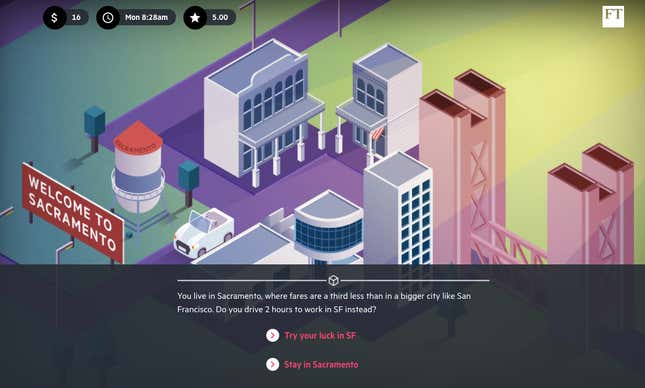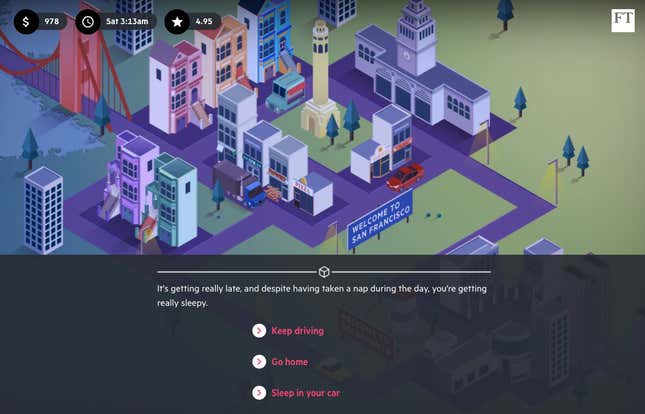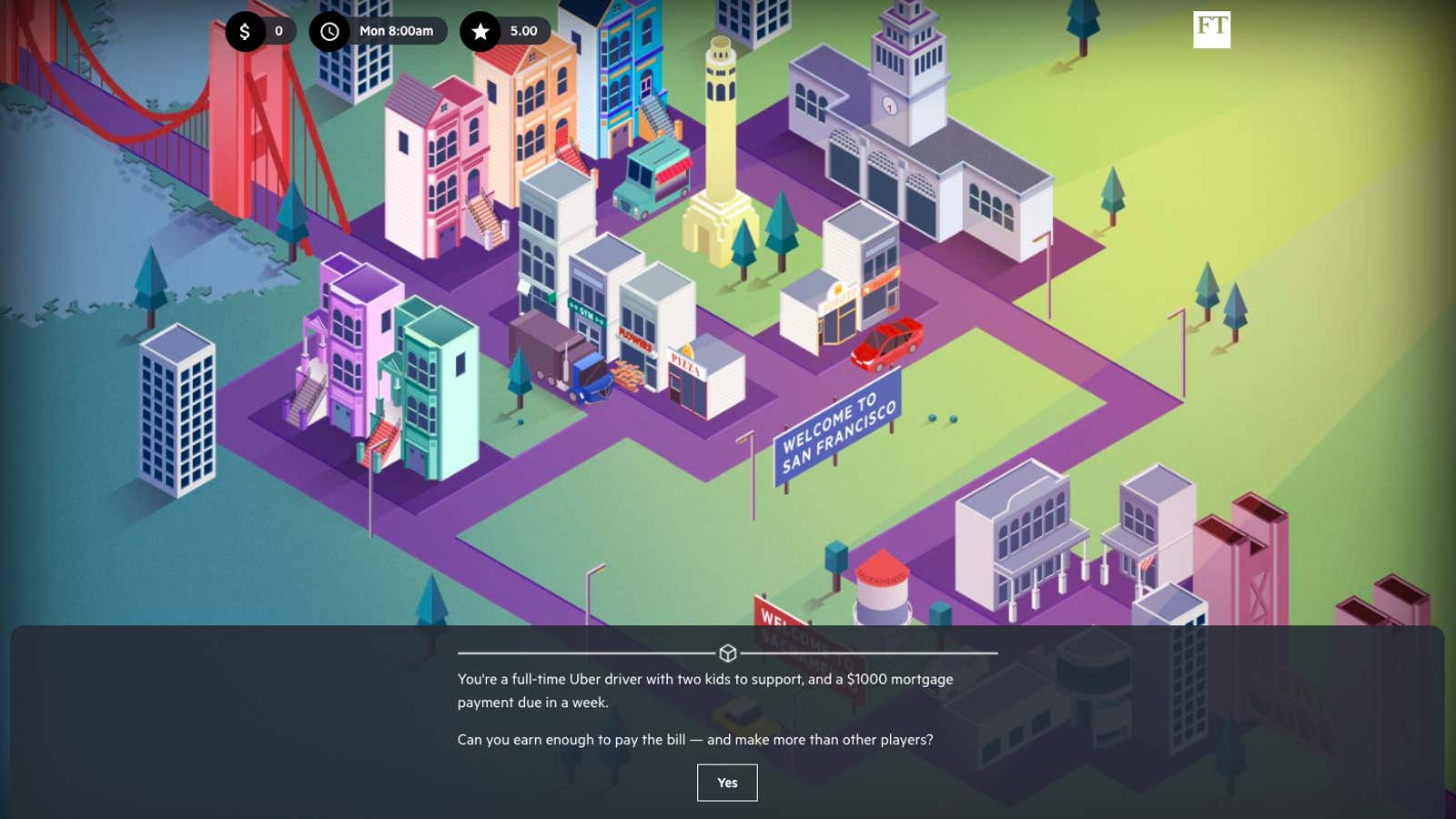If you haven’t already, it’s worth trying out “The Uber Game” from the Financial Times, which simulates what it’s like to be an Uber driver. It’s a choose-your-own-adventure story for the “gig” economy, where you’re the Uber driver and every choice determines whether you make enough money that week to pay your mortgage.
Didn’t purchase cleaning supplies? That’s a setback when a messy passenger drips ketchup on your back seat. Take a day off to spend time with your kids? You might not complete your bonus “quest.” In the easy version of the game you live in San Francisco and have good credit; in the hard version you live in Sacramento and your credit is poor.

The FT built its game with help from Christian Perea, a blogger at driver website The Rideshare Guy. It runs through some of the most common dilemmas drivers encounter: whether to pick up a vomiting passenger; whether to “chase the surge,” Uber’s term for higher fares due to increased demand in a particular area; whether, late at night, to skip the drive home and sleep in your car.

Uber has always used incentives to keep its drivers moving. Surge pricing was the original and is now complemented by boost (guaranteed higher fares during a certain window), and quest (complete X rides in Y hours to earn a bonus of $Z). Uber couples these incentives with alerts designed to keep drivers engaged, such as texting them a reminder about the morning rush hour, or telling them how close they are to completing a quest when they attempt to log off.
Drivers can earn badges for specific achievements (“Above and Beyond,” “Entertaining Drive”) as well as rider “compliments.” The New York Times reported earlier this year that Uber has “experimented with video game techniques, graphics and noncash rewards of little value that can prod drivers into working longer and harder.”
Uber isn’t alone in this approach. Shoppers for Instacart, a grocery delivery service, are evaluated on metrics like speed and share of orders without issues. Postmates, a food delivery company, has its own version of surge called “blitz pricing” and shows couriers a heat map of busy areas. Postmates and its competitor, DoorDash, both tell workers how many deliveries they’re averaging an hour. Managing in the “gig” economy, where companies tend to hire independent contractors and can’t technically set schedules or tell workers how to do their jobs, is done through nudges, push notifications, and personalized metrics.
The FT simulation is clever because it requires no embellishment. Uber and companies like it already gamified the work experience; the FT just shows us how.
